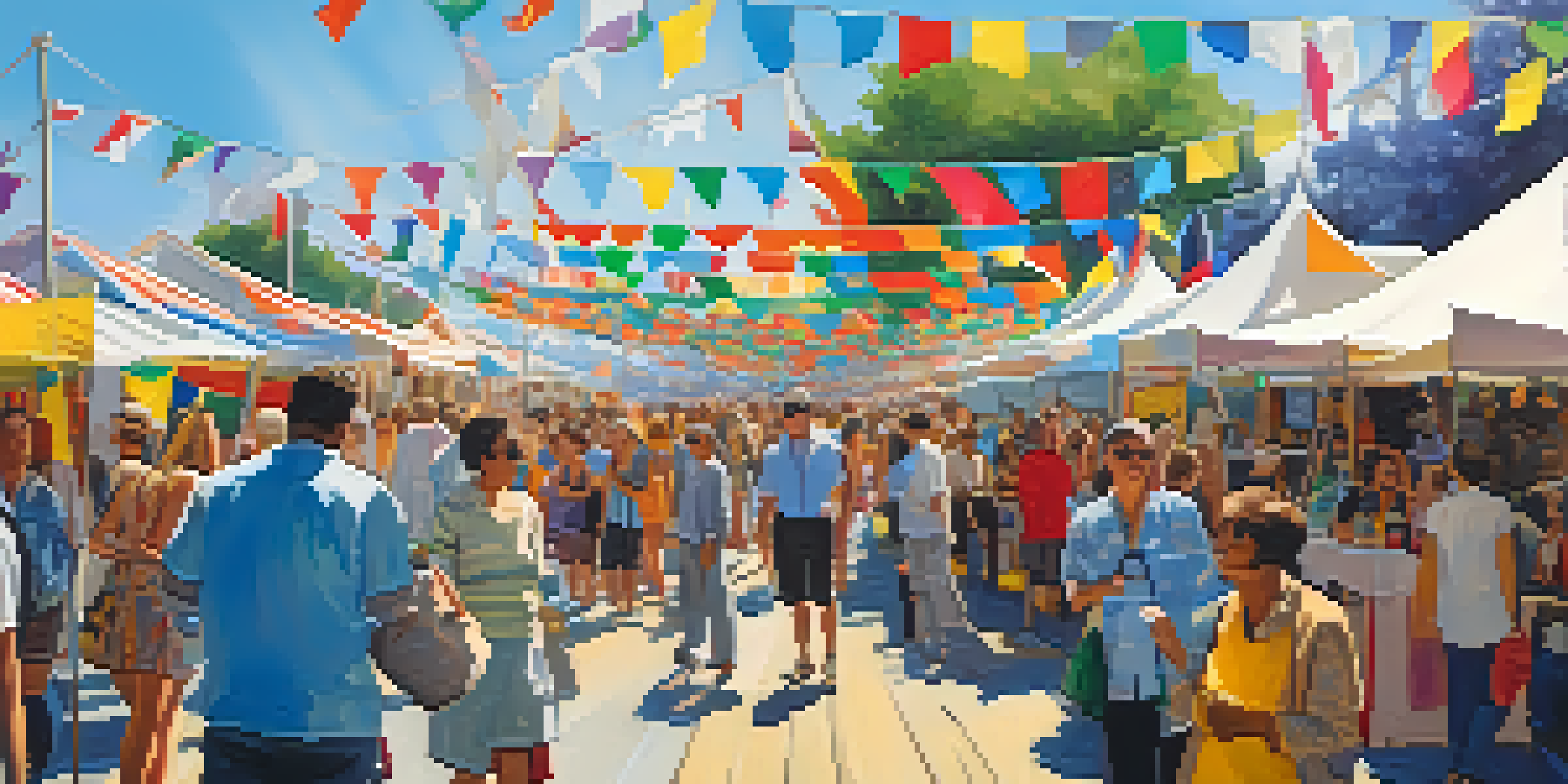Globalization and the Evolution of Painting Styles Today

Understanding Globalization in the Art World
Globalization refers to the interconnectedness of cultures and economies across the globe. In the art world, this means that artists from various backgrounds are influenced by and can access a wealth of diverse styles and techniques. The exchange of ideas is no longer confined by geographical boundaries, allowing for a richer, more varied artistic landscape. This interconnectedness is vital for understanding the evolution of painting styles today.
The Influence of Cultural Exchange on Painting
Cultural exchange plays a crucial role in the evolution of painting styles. For instance, traditional techniques from one region may merge with contemporary styles from another, creating unique hybrids. A perfect example is the integration of Japanese ink wash techniques into Western watercolor practices, giving rise to fresh artistic expressions. This blending showcases how globalization allows for a dialogue between different cultures, enriching the art community.
Globalization Enriches Art Diversity
The interconnectedness of global cultures allows artists to explore diverse styles and techniques, creating a richer artistic landscape.
Technology's Role in Global Artistic Collaboration
Technology has revolutionized how artists connect and collaborate on a global scale. Through social media platforms and online galleries, painters can showcase their work to an international audience instantly. This instant connection not only broadens their reach but also facilitates feedback and inspiration from a diverse group of peers. Such digital platforms have become a melting pot of ideas, driving innovation in painting styles today.
Emerging Trends in Global Painting Styles
As globalization continues to shape the art world, several trends are emerging in painting styles. One notable trend is the rising popularity of street art, which often reflects social and political issues that resonate globally. Additionally, there’s a noticeable shift towards abstract and conceptual works that challenge traditional boundaries, inviting viewers to interpret meaning on a personal level. These trends are a testament to the changing landscape of modern painting influenced by global interactions.
Cultural Exchange Shapes Painting Styles
The merging of traditional and contemporary techniques from different regions leads to unique artistic hybrids that reflect global dialogues.
The Role of Art Fairs and Biennales in Globalization
Art fairs and biennales have become significant platforms for global artistic exchange. Events like the Venice Biennale showcase artists from all over the world, facilitating cultural dialogue and collaboration. Such gatherings highlight diverse perspectives and foster an appreciation for different painting styles, enriching the global art scene. They also provide artists with opportunities to network, gain visibility, and explore new avenues for their work.
The Impact of Globalization on Local Art Styles
While globalization promotes the blending of styles, it also impacts local art scenes. Artists may draw inspiration from global trends, but they often infuse their work with local traditions and narratives. This results in a vibrant fusion that honors heritage while embracing innovation. It’s a beautiful dance between preserving cultural identity and exploring new artistic frontiers.
Challenges in a Saturated Art Market
While globalization offers opportunities for collaboration, artists face challenges such as market saturation and cultural appropriation.
Challenges Faced by Artists in a Globalized World
Despite the opportunities globalization brings, artists face several challenges. The saturation of the art market can make it difficult for individual voices to stand out amidst the noise. Additionally, issues of cultural appropriation arise when elements of one culture are used by another without proper context or respect. Artists must navigate these complexities to maintain authenticity in their work while engaging with global influences.
The Future of Painting in a Global Context
Looking ahead, the future of painting in a global context appears vibrant and dynamic. As artists continue to merge influences from various cultures, we can expect to see even more innovative styles emerge. The ongoing dialogue between local and global perspectives will likely inspire new movements and techniques. Ultimately, the evolution of painting styles will reflect the ever-changing tapestry of our interconnected world.